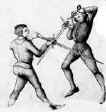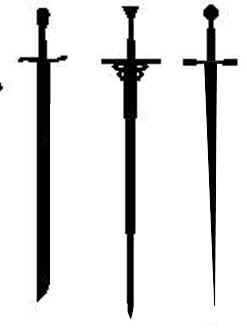 |
| FENCING |
 |
| Fencing schools abounded during the late 16th and early 17th Centuries. The most famous teachers in the sport of fencing came from Italy. Many of the schools from the 16th Century looked to the Italians for the practice and philosophy used in fence. The English were especially interested by Italian practices as well as clothing styles. |
 |
| You may notice that the word defense is spelled with a C (defence) in many places. This is to reflect the spelling of the word used during the Elizabethan period and that this art is based on fencing. |
 |
| THE FENCING PISTE 1. Bouts and Matches may be held outdoors on any suitable natural or artificial terrain. 2. The piste shall not be less than 20 feet in length, nor more than 30 feet and shall be not less than four feet wide. 3. Regardless of the piste length, any fencer who leaves the end of the piste with either foot shall be counted as touched. The line marking the end of the piste itself shall be considered out of bounds. |